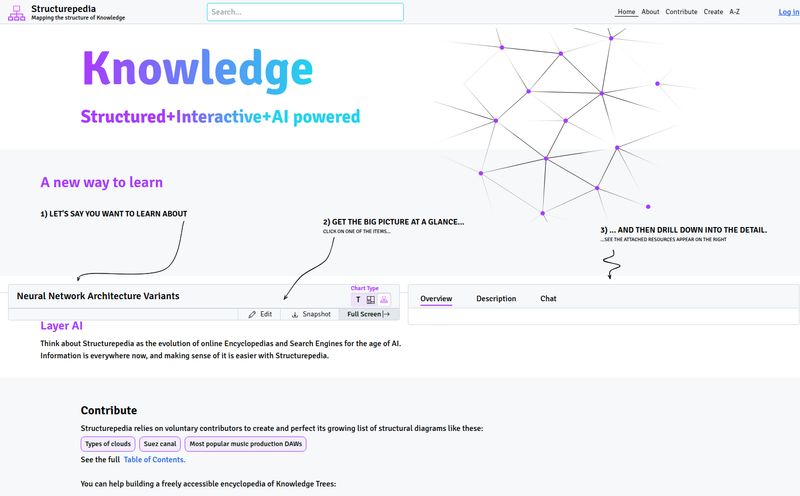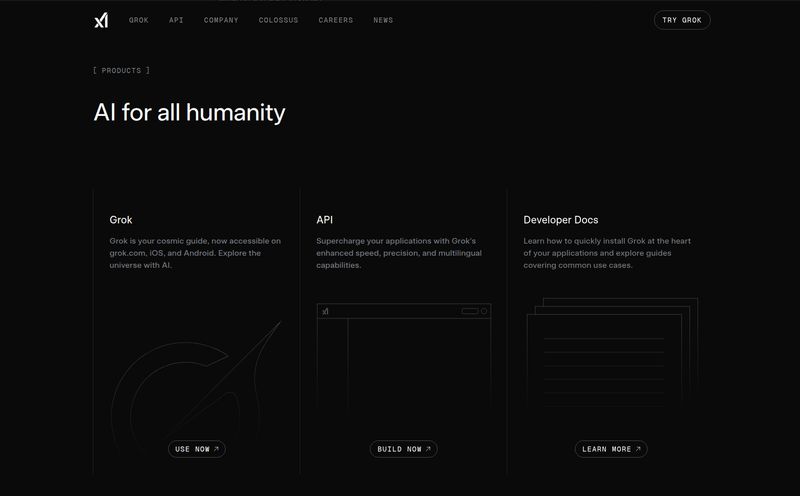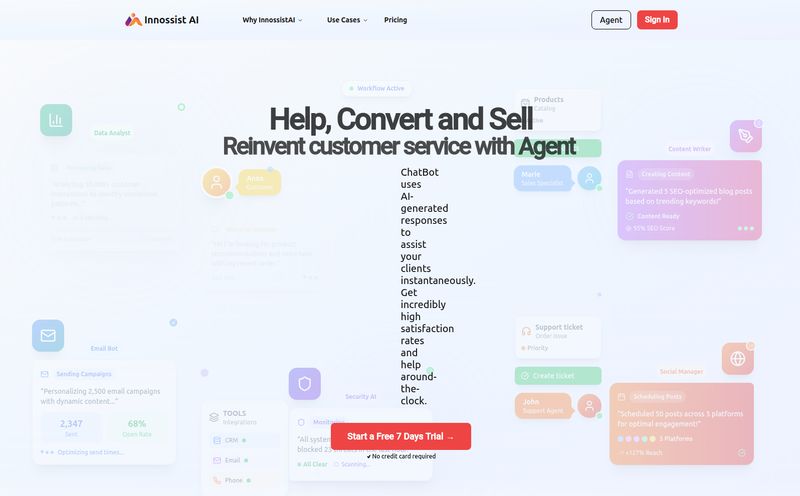We've all been there. Staring into the void of a webcam, on your fourth back-to-back call of the day, wondering if the sweet release of your laptop battery dying would be a blessing. The meeting has no agenda. The same two people are doing all the talking. And you know, deep in your soul, this entire hour-long slog could have been a three-sentence email. It's the modern corporate condition, isn't it?
For years, I've seen teams try everything. Mandatory agendas (that no one reads), strict timelines (that everyone ignores), and designated notetakers (who always seem to be 'having connection issues'). It's like trying to herd cats with a piece of wet spaghetti. So when I kept hearing whispers about a tool called Decisions, which claims to be an AI-powered meeting manager for Microsoft Teams, my inner cynic and my exhausted-from-meetings-self were both intrigued. Could a piece of software actually fix... people?
I decided to take it for a spin. And I've got some thoughts.
So, What Exactly is This 'Decisions' Thing?
First off, Decisions isn’t trying to be another Slack or Teams. Thank goodness. The last thing any of us need is another platform to check. Instead, it’s a smart layer that sits directly inside your existing Microsoft 365 and Teams environment. Think of it less as a new building and more like a brilliant architect who comes in to redesign the chaotic rooms you already have.
The whole philosophy is built on a simple, powerful loop: Prep, Run, Do, Repeat. It’s designed to inject structure and purpose into the entire meeting lifecycle, from the initial planning stages to the crucial follow-up tasks that so often get lost in the digital ether.
It helps you build structured agendas, keeps you on track during the actual meeting, and then uses some nifty AI to make sure what you talked about turns into actual, well, decisions and actions. A novel concept, I know.
The Features That Genuinely Made Me Sit Up
A features list is just a features list until you see how it actually solves a problem. Here’s the stuff that stood out to me as genuinely useful, not just marketing fluff.
The Agenda is King (And AI is its Prime Minister)
I've always preached that a meeting without an agenda is just a glorified coffee break. Decisions takes this to another level. The AI Agenda Assistant is pretty slick. You can throw a few keywords or a theme at it, and it will suggest relevant topics, timings, and even who should present them. It pulls from past meetings and documents to make these suggestions, which is a huge timesaver.
But the best part is the collaboration. Team members can add their own topics, attach files directly from SharePoint or their computer, and leave comments before the meeting even starts. This means you walk in with everyone already on the same page. A small change, but a game-changer for efficiency.
During the Meeting: Keeping the Train on the Tracks
Once the meeting starts in Teams, the Decisions agenda is right there in the side panel. It’s not a separate window you have to toggle to. As you move through topics, the timer keeps everyone honest. No more 20-minute monologues on a 5-minute agenda item. It even has a nifty feature for voting and getting formal sign-offs right in the meeting, which for some teams dealing with compliance, is a massive win.

Visit Decisions
I was also weirdly fascinated by the Meeting Engagement Score™️. It gives you feedback on how well your meetings are run. A bit like a Fitbit for your meeting culture. My cynical side initially scoffed, but seeing the data on which meetings were productive and which weren't was surprisingly insightful.
The Magic After the Meeting: AI Recaps and Minutes
Okay, this is the showstopper. We all know the pain of trying to decipher scribbled notes (or worse, having to re-watch a recording) to pull out action items. The AI Meeting Recaps and Minutes feature is, frankly, brilliant. With a click, it transcribes the meeting and then uses AI to generate a summary, identify key decisions made, and list out the tasks that were assigned, complete with owners and deadlines. It’s not perfect every single time, but the amount of manual work it eliminates is staggering. This alone could justify the price for many teams.
Let's Talk Turkey: Decisions Pricing
Alright, so how much does this meeting utopia cost? The pricing structure is actually pretty straightforward, which I appreciate. They have a few main tiers.
| Plan | Price | Best For | Key Details |
|---|---|---|---|
| Free | Free | Small Teams | Up to 5 users in an organization with 30 or fewer people. Access to most core tools, limited AI. |
| Business | $14/user/month | Most Businesses | Full suite of tools, plus 100 monthly AI credits per license. Billed annually. |
| Large Teams | Let's Talk (Custom) | Enterprises | Customizable features, scalable AI, dedicated support, secure voting, eSignature. |
| Premium AI Add-on | $10/user/month | AI Power Users | Unlimited AI credits. Requires a base Decisions license. |
I've gotta give them props for the Free plan. It's not one of those useless, crippled trials. For a small team of 5 or less, it gives you a real taste of what the tool can do. The Business plan feels like the sweet spot for most organizations, and the 100 AI credits are a decent starting point. The Premium AI add-on is for the real die-hards who are in meetings all day long and want the AI to do all the heavy lifting without thinking about credits.
The Good, The Bad, and The... Complicated
No tool is perfect. After kicking the tires, here’s my honest breakdown.
What I Loved
The integration with Microsoft is flawless. It feels like a natural part of Teams, not a clunky bolt-on. The AI features, especially for minutes and recaps, are genuinely transformative for productivity. And for the IT folks, the fact that it runs on Microsoft Azure OpenAI services means your data stays within your own secure tenant, which is a massive plus for privacy and security. You also can't ignore the impressive list of clients and certifications like ISO and AICPA SOC 2 they have, that speaks volumes.
What You Should Know
This isn't really a 'con' so much as a reality check. Decisions requires buy-in. It's not a magic wand you can wave to instantly fix your company culture. If your team resists structure, there will be a learning curve. Also, you have to be a Microsoft shop. If your team lives in Google Workspace, this obviously isnt the tool for you. Finally, the best AI features are gated behind credits or the premium license. This is fair, as that tech costs money, but it's something to budget for.
Who is This Tool Really For?
So, who should pull the trigger on Decisions? In my opinion, it's a no-brainer for any mid-to-large-sized organization that runs on Microsoft 365 and is feeling the pain of meeting overload. If terms like 'governance,' 'compliance,' and 'action items' are part of your daily vocabulary, this tool will feel like a breath of fresh air.
For smaller businesses or startups already in the Microsoft ecosystem, the Business plan is an incredibly powerful tool for establishing good meeting hygiene early on, before bad habits set in. It could save you from future chaos.
Conclusion: Can Decisions Save You From Meeting Hell?
Look, Decisions won't magically make your coworker less long-winded, and it won't make a boring topic exciting. But what it can do is provide a framework that holds everyone accountable. It systematically removes the common points of failure for meetings: the lack of preparation, the absence of a clear plan, and the black hole where action items go to die.
After using it, I can say it's one of the most thoughtfully designed productivity tools I've seen in a while. It doesn’t try to do everything; it focuses on doing one thing—meetings—exceptionally well. If you're tired of wasting hours in pointless calls, I'd say giving their free plan or trial a shot is, well, a pretty good decision.
Frequently Asked Questions
- How does the Decisions free trial work?
- Decisions offers a fully-featured free plan for small teams (up to 5 users in an organization of 30 or fewer). For larger teams, you can contact them for a demo or trial of the business plan to see how it fits your workflow before committing.
- Is Decisions secure? Where is my data stored?
- Yes, it's very secure. Decisions leverages Microsoft Azure OpenAI Services, which means your data, prompts, and meeting content are processed within your organization's own secure Microsoft tenant. It never leaves that environment or gets used to train public AI models. They also hold major security certifications.
- Do I need to pay extra for the AI features?
- The Business plan includes 100 AI credits per user per month, which covers a good amount of usage for features like AI-generated minutes and agendas. If you're a heavy user, you can purchase more credits or opt for the $10/month Premium AI add-on for unlimited access.
- Can I use Decisions without Microsoft Teams?
- Decisions is designed to be deeply integrated with the Microsoft 365 ecosystem. While some features might work in the web app or Outlook, its full power is really unleashed inside Microsoft Teams. It's not a standalone product.
- What is the Meeting Engagement Score™️?
- It's an analytics feature that provides feedback on your meeting practices. It looks at things like whether an agenda was shared in advance, if the meeting started and ended on time, and participant engagement to give you an overall score. It’s meant to help you identify areas for improvement in your meeting culture.
- Is it hard to get my team to adopt a new tool like this?
- There can be a learning curve with any new software. However, because Decisions lives inside Teams—a tool your team already uses—the barrier to entry is much lower than adopting a completely new platform. The key is demonstrating the immediate value, like the time saved with automated meeting minutes.



